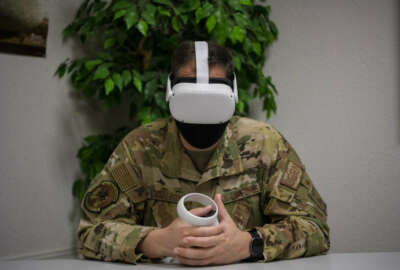Post-pandemic, the civil service is expected to be hybrid, paperless and agile. This is thanks to cloud technology, which the Labor Department, Government Accountability Office and Air Force have implemented in tailored ways both thanks to and pre-dating COVID-19’s forced mass telework conditions.
Since last year, Labor has embraced the remote working environment more eagerly and adjusted its approach to collaboration. Taking the foreign labor certification process at Labor from paper-based to the cloud — which Rick Kryger, deputy chief information officer for Operations, said thankfully was done prior to the pandemic — streamlined the process from handling applications to reviewing and processing them.
“There’s interaction between federal agencies to accomplish that. So between the Department of Labor, we obviously have to communicate with immigration on that particular topic, to make sure that approval for that purpose flows through all the government’s processes, not just at the Department of Labor, but it affects also agriculture [for farm workers] and immigration,” he said as part of a virtual panel hosted by GovExec on Thursday. “So it streamlines it across government, not just at one agency where we see benefits like that.”
The department also transitioned court filing and appeals for labor disputes from paper to the cloud, which Kryger said was important because the National Archives and Records Administration is requiring agencies to submit digital versions for permanent records.
But going paperless also affected collaboration habits and how managers operate. Kryger described a noticeable change in the way a Zoom meeting, for example, eliminates the “head of the table” dynamic of a physical conference room, which helps more people join the conversation. While he does foresee a hybrid model when some people return to the office eventually, that digital component to collaboration is not going away.
Cloud enables virtual and augmented reality
Going paperless helped the Air Force track its flight evaluations more efficiently and accurately, but when the pandemic hit, the need for digital was especially dire. Maj. Bryan Allebone, a combat training instructor at Offutt Air Force Base, Nebraska, and his team relied on using virtual reality and augmented reality, which also brought a content delivery issue.
“We were able to leverage things like software-as-a-service using some of the API-driven stuff from Box in order to actually distribute that content, because in a lot of ways, it’s kind of sensitive or mostly sensitive a lot of the times,” he said. “But this made it accessible from a FedRAMP-approved source on an application we developed, and it was thin, it was something we could put out at the edge of a person’s device, and allow them to offload that to the SaaS provider.”
VR and AR have potential in a post-pandemic world as well. Taka Ariga, chief data scientist and director of GAO’s Innovation Lab, said the agency can use AR to conduct oversight visits as the COVID Delta variant makes travel precarious. GAO can physically send just one person to a site instead of 20 or so, and still achieve the same collaboration experience with headquarters or a field office.
Ariga said that before an agency spends one penny, from the Technology Modernization Fund or elsewhere, in the name going virtual they, should “articulate what is the architecture of your cloud journey.” Is it lift and shift or cloud-optimized?
“And more importantly, go talk to folks like Rick, who have done the work before, so that you’re not reinventing those lessons learned,” he said. “Many federal agencies are loath to talk about failure — that ‘F’ word is such a dirty word in the public sector. But there are many common sort of mistakes that organizations tend to repeat because they’re not having these types of knowledge sharing.”
Copyright
© 2024 Federal News Network. All rights reserved. This website is not intended for users located within the European Economic Area.





